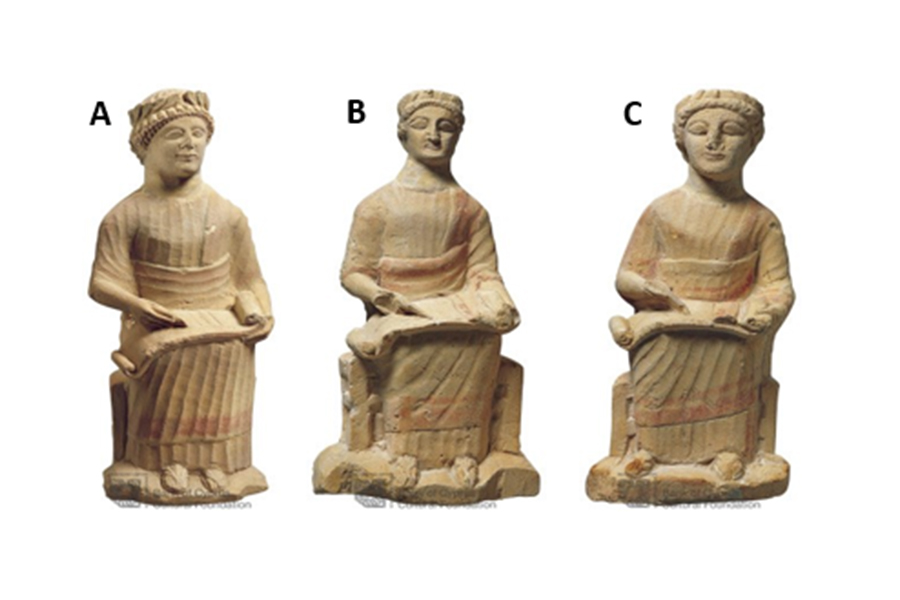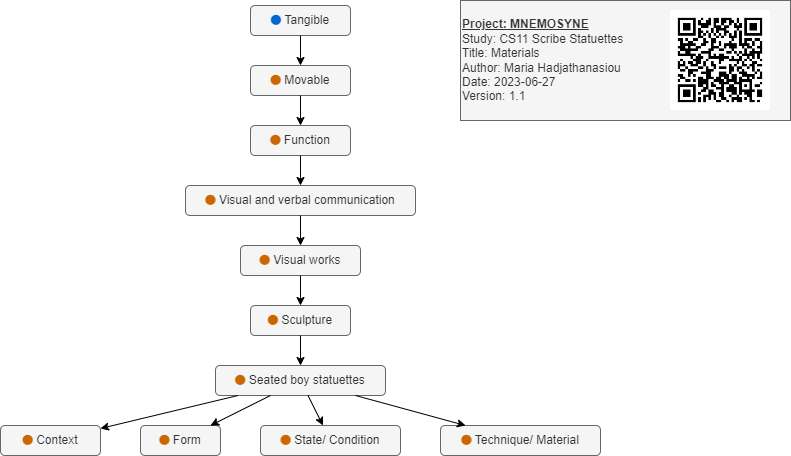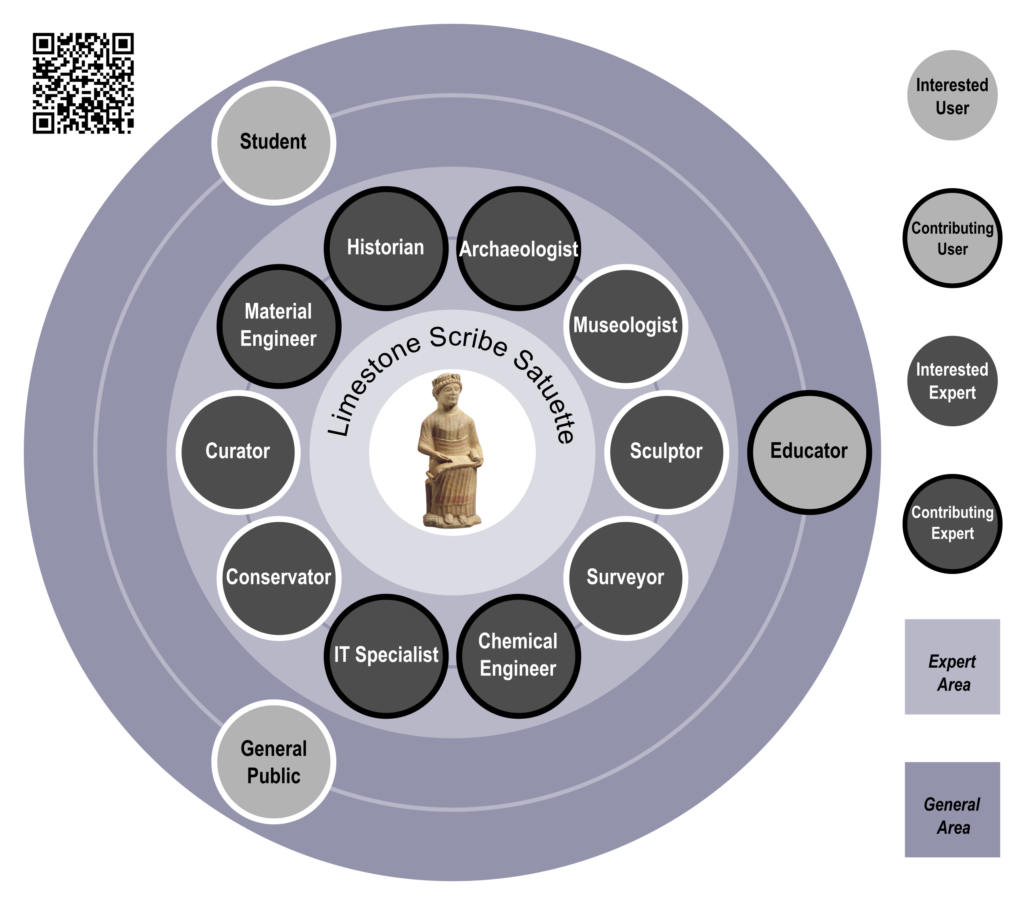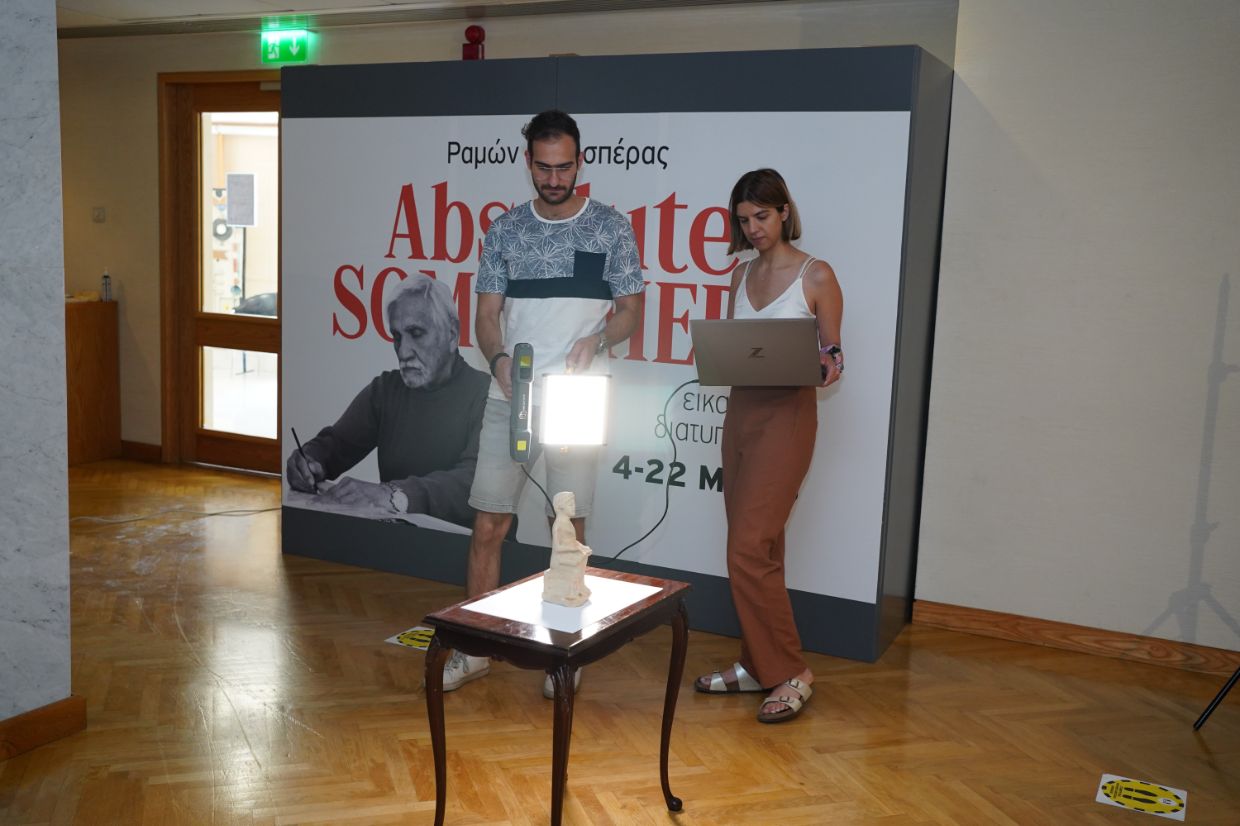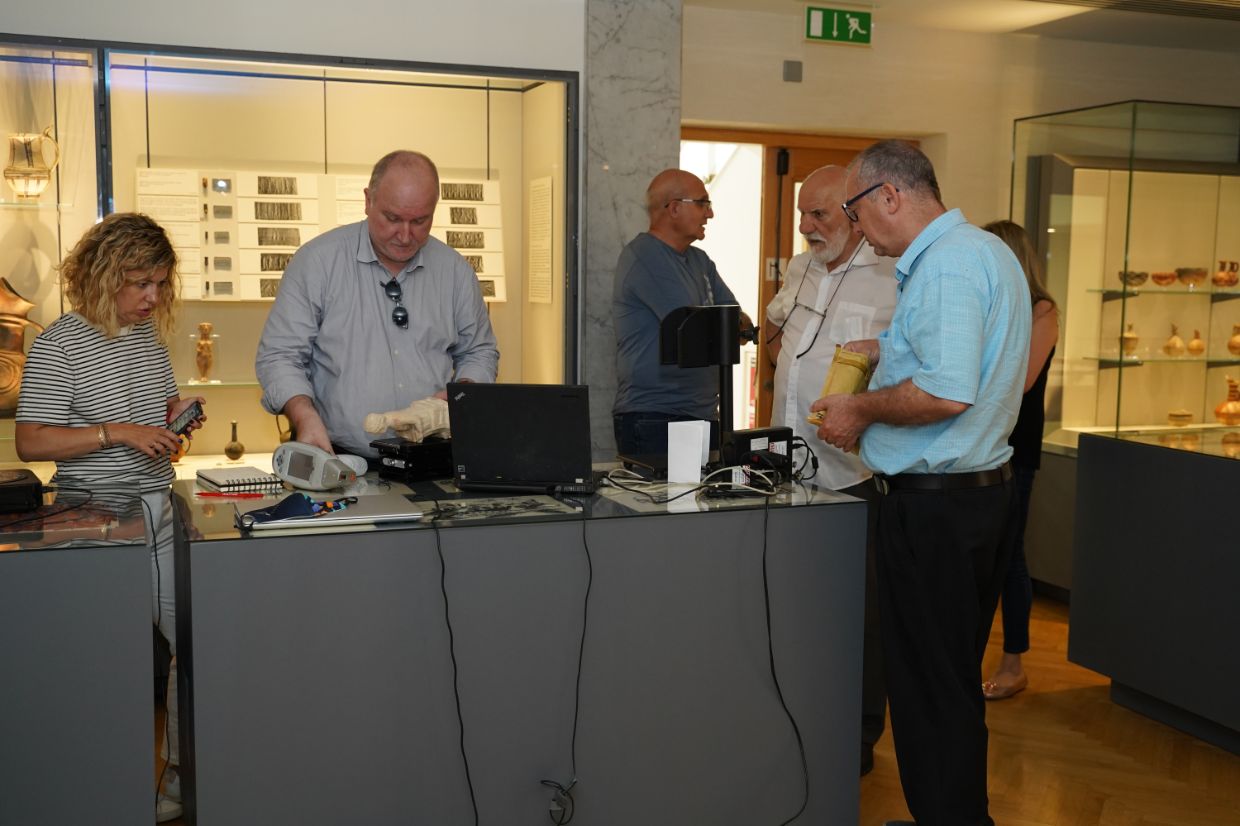1. Introduction
The three limestone statuettes date from the 5th century B.C. to the middle of the 4th century B.C. and belong to the type known as temple-boys. The statuettes are part of the George and Nefeli Giabra Pieridis Collection of Cypriot antiquities, donated at the Bank of Cyprus Cultural Foundation (BOCCF) in Nicosia (CY), where they are currently on display. This type of temple-boy statuette was offered to both male and female divinities as votive offerings and they are rarely found in tombs. The most plausible theory and interpretation about temple-boys statuettes is that they were somehow connected with circumcision. Temple-boys limestone statuettes must have been very popular in Cyprus as three hundred of them have been assembled by Cecilia Beer and fifty-one of them are in the Censola Collection. Samples were found also in the Levant, where they may have been exported or made locally by Cypriots. The statuettes under study, wear a chiton and a himation, the folds of which are rather crudely rendered with shallow grooves. The sandaled feet rest on a plinth. There is a scroll spread on the knees, one edge of which the boy holds with the left hand; in the right hand, he holds a stylus, resting on the papyrus. Curly hair; he wears a wreath of leaves around his head. Traces of red paint on the garments, on lips and the hair.
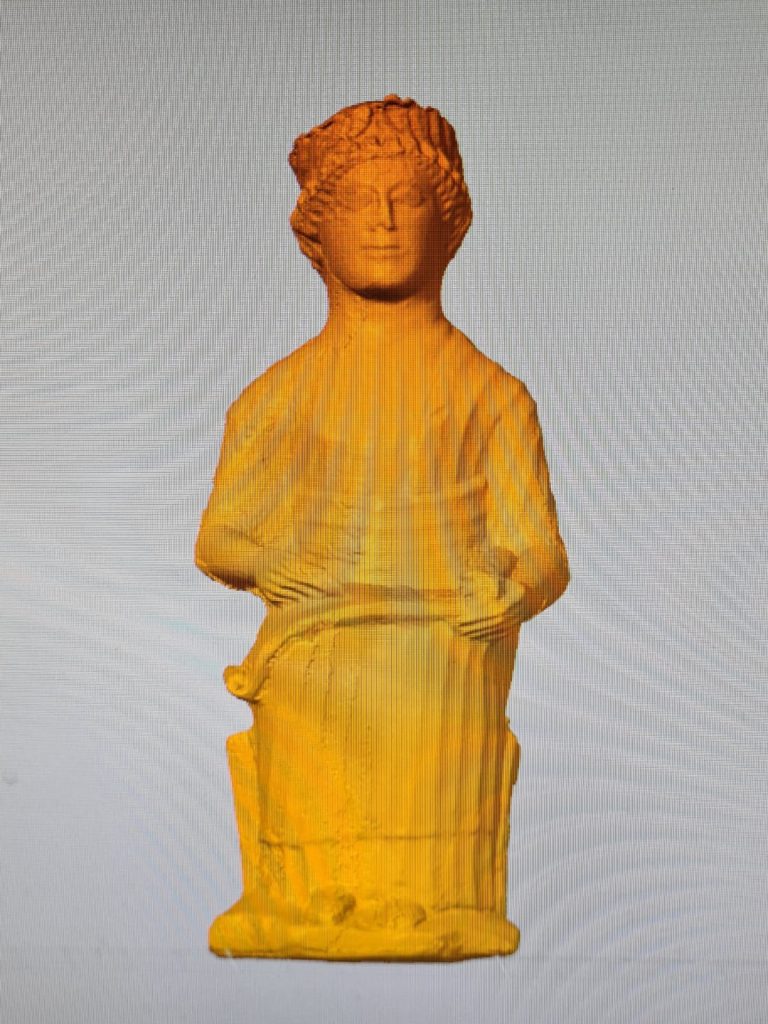
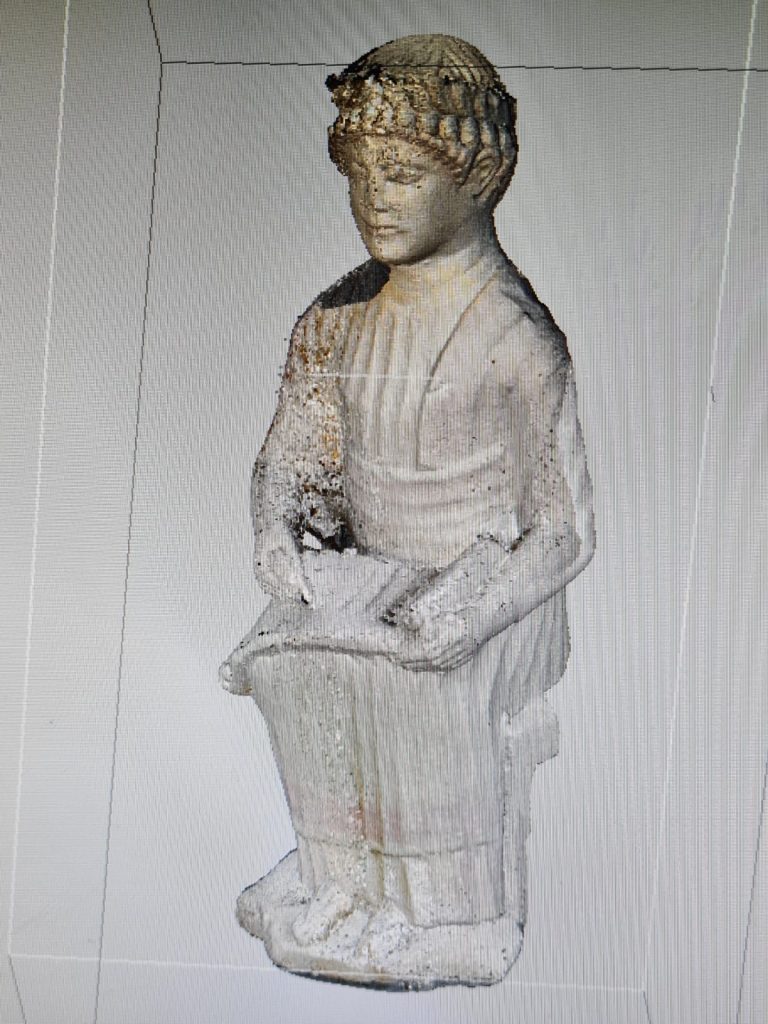
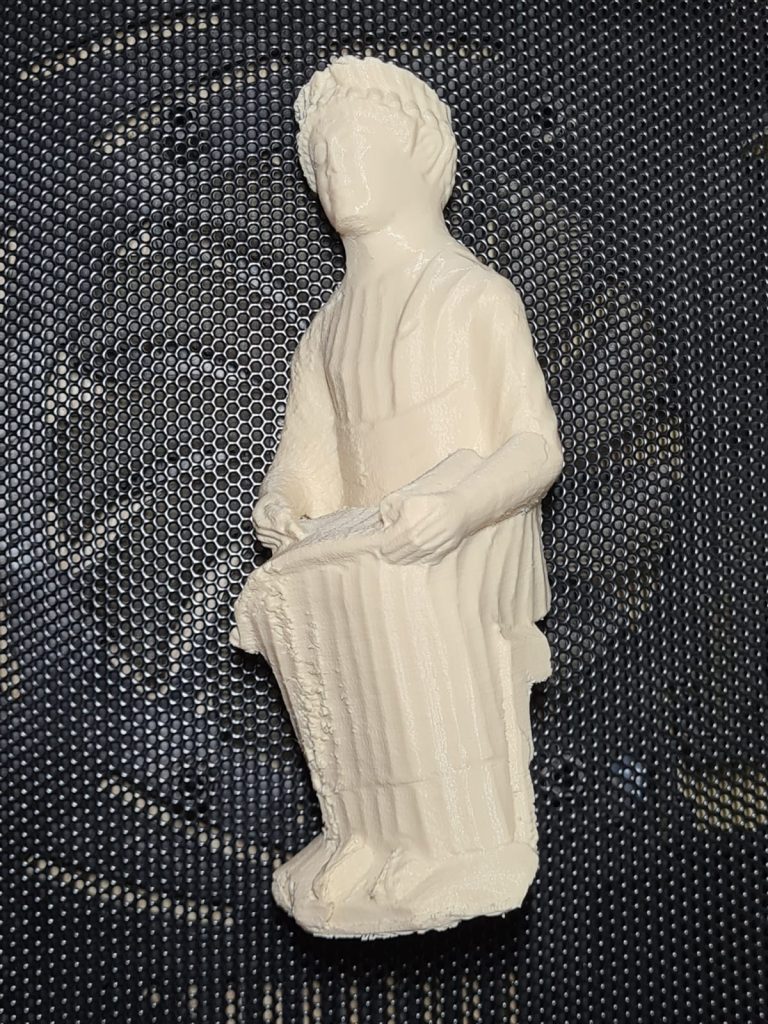
On May 31, 2022, members of the MNEMOSYNE project team visited the Museum of George and Nefeli Giabra Pierides Collection, at the BOCCF, in Nicosia, to study and digitize artefacts belonging to the collection. The collection numbers more than 600 objects and covers a wide range of Cypriot Archaeology from the Early Bronze Age to the Medieval period. It includes unique examples of Mycenaean pottery and examples of pottery from the Geometric, Archaic, Classical, Roman and Medieval periods, clay figurines, stone sculptures and seals, jewellery, coins and bronze objects. In consultation with the Head Curator of the Museum, Dr Christodoulos Hatzichristodoulou, the three limestone statuettes of a clothed youth sitting of the Cypriot-classical period were chosen to be studied. In collaboration with the University of West Attica, the study of the chemical composition of the objects was carried out through the non-invasive technologies of X-ray fluorescence spectroscopy and X-ray Raman spectroscopy, which allow the identification of traces of colours in the objects under study.
For the holistic documentation of the Scribe Statuettes, a conceptual model of data was created which divides the different types of data needed for the record of a cultural heritage object into classification categories. The general taxonomic system was developed under the MNEMOSYNE project (H2020 ERA Chair) and categorizes the Scribe Statuettes within classes such as Tangibleand Movable. This type of data offers important information regarding the history of the objects. Furthermore, the MNEMOSYNE research group focused on the digital reconstruction of the statuettes. Shedding light on the polychromy components of the limestone statues from Cyprus allowed the digital reconstruction of the colours, visualizing the statuettes in their original forms. After receiving the processed and structured data of the Statuettes the team will be able to create a virtual exhibition of the statues in their original form, through the implementation of XR technologies that can provide users of different backgrounds the unique opportunity to examine them closely, employing at the same time, innovative, user-centred storytelling methodologies.
The case study of the three limestone statuettes of temple boys allowed the ERA Chair team members to focus on the characterization of polychromy on limestone sculptures from Cyprus. Limestone sculpture is an important expression of the Cypriot artistic production in Antiquity. Polychromy components have been identified using physico-chemical analytical techniques (e.g., x-ray fluorescence spectroscopy, Raman spectroscopy). The analytical techniques contributed to the identification of the original pigments present on the statuettes. In this research work the analysis focused on the characterization of artist’s use of colour in ancient Cyprus and the identification of the pigments used. Results revealed inscriptions on limestone reliefs and traces of red ochre and hematite visible to the naked eye, yellow ochre and green earth pigments, non-visible to the naked eye. Traces of red paint are visible to the naked eye on the garments, lips and hair of the statuettes. The identification of original pigments provides information for art-historical and archaeological studies on aspects such as the material and symbolic status of statues, manufacturing techniques or workshop secrets, and diachronic developments of style and technologies.
3. Estimation of Complexity & Quality
The following radial charts are base on based on the EU 3D Study/VIGIE 2020/654
6. Research Outputs
Accessibility and Reuse
This case study has been submitted to the local aggregator (APSIDA) and successfully harvested into the Europeana platform under CC BY-NC-SA 4.0 license.
7. Bibliography
- Beer, Cecilia (1994). ‘Temple-boys: A Study of Cypriote Votive Sculpture’, Studies in Mediterranean Archaeology, Vol. 113, Part 1, catalogue.
- H2020 ERA chair. (n.d.). Retrieved August 10, 2022, from http://erachair-dch.com/about/
- Janssens, K., Vittiglio, G., Deraedt, I., Aerts, A., Vekemans, B., Vincze, L., Wei, F., de Ryck, I., Schalm, O., Adams, F., Rindby, A., Knchel, A., Simionovici, A., & Snigirev, A. (2000). Use of microscopic XRF for non-destructive analysis in art and archaeometry. X-Ray Spectrometry, 29(1), 73–91. https://doi.org/10.1002/(SICI)1097-4539(200001/02)29:1<73::AID-XRS416>3.0.CO;2-M
- Karageorghis, Vassos., & Boardman, J. (2002). Ancient art from Cyprus: in the collection of George and Nefeli Giabra Pierides. Kapon Editions.
- Rousaki, A., & Vandenabeele, P. (2021). In situ Raman spectroscopy for cultural heritage studies. Journal of Raman Spectroscopy, 52(12), 2178–2189. https://doi.org/10.1002/jrs.6166

